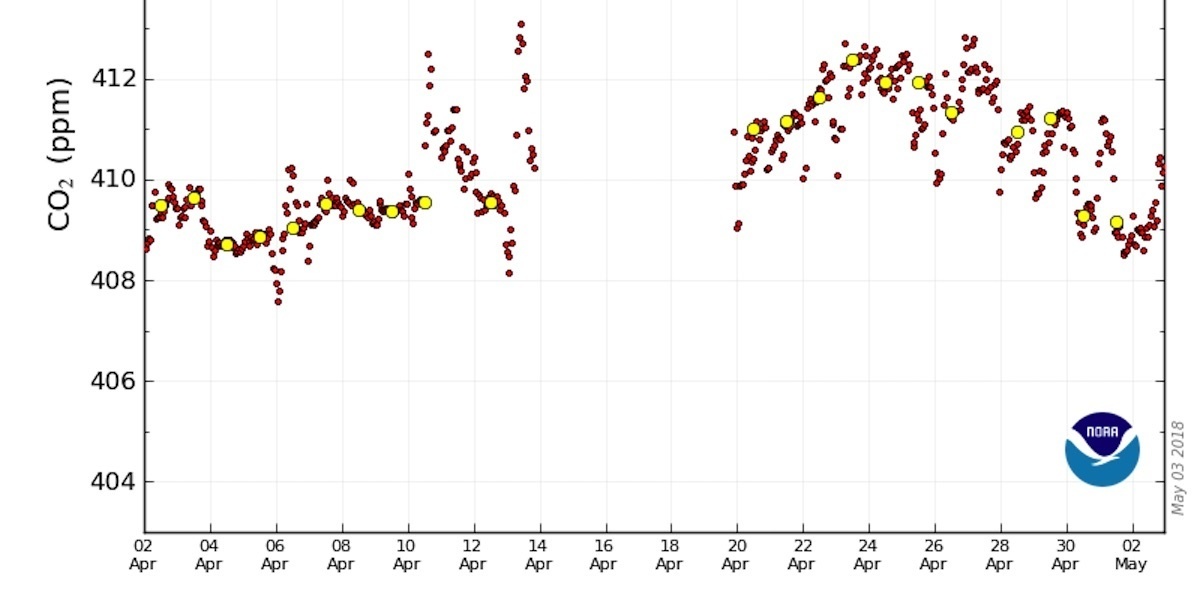

April was the first month in recorded history with an average concentration of atmospheric
carbon dioxide topping 410 parts per million (ppm).
This dubious new milestone was
recorded at the Mauna Loa Observatory in Hawaii by the Keeling Curve, a program of the Scripps Institution of Oceanography at the University of California San Diego.
ICYMI: April posts first-ever monthly average carbon dioxide level over 410. https://t.co/H4iyHXO2sG #climatechange #globalwarming #noaa pic.twitter.com/56op6hr8iL
— Keeling_Curve (@Keeling_curve) May 2, 2018
To put this latest reading into perspective, at the beginning of the industrial revolution around 1880, the CO2 level stood at 280 ppm. It climbed to 315 ppm in 1958, the year Mauna Loa started record-keeping. It surpassed 400 ppm in 2013, before becoming a
dangerous new norm for several years. Then around mid-April, the planet breached 410 ppm for the first time.
These CO2 levels, according to NOAA’s climate department, haven’t been seen on Earth in 3 million years, when temperatures were 3.6° to 5.4°F warmer, and sea level was 50 to 80 feet higher than today
Carbon dioxide is a heat-trapping
greenhouse gas and the leading driver of man-made climate change.
“We keep burning
fossil fuels. Carbon dioxide keeps building up in the air,” said Scripps CO2 Program director Ralph Keeling, the son of the late Keeling Curve creator Charles David Keeling, in a statement.
“It’s essentially as simple as that,” he added.
Keeling told the Washington Post that Earth’s breaching of 1.5 or 2°C—the two temperature limits included in the Paris climate agreement—is not committed yet, but could get closer with time.
“We don’t have a lot of headroom,” he said.
“It’s not going to be a sudden breakthrough, either,” Keeling added. “We’re just moving further and further into dangerous territory.”
Climate scientist Katharine Hayhoe tweeted, “As a scientist, what concerns me the most is what this continued rise actually means: that we are continuing full speed ahead with an unprecedented experiment with our planet, the only home we have.”
Planet Breaches 410 ppm for First Time in Human History https://t.co/9igTOH9NEk @algore @billmckibben @MichaelEMann @climatehawk1 @IENearth
— EcoWatch (@EcoWatch) April 24, 2017

 233k
233k  41k
41k  Subscribe
Subscribe 